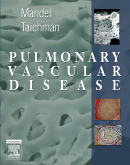Description
Focusing on clinical decision making, this new reference provides
current, comprehensive coverage of the pathophysiology, diagnosis,
and treatment of pulmonary hypertension and vasculitis, as well as
other related health issues. A structured diagnostic approach enables
you to determine underlying etiology, then guides you to appropriate
pharmacologic and non-pharmacologic therapeutic options, based upon
their potential risks and benefits. Over 400 illustrations depict
variations of pulmonary hypertension that are essential for
successful identification and optimal management outcomes.
Key Features
Discusses indepth the pharmacologic and non-pharmacologic therapies
used in the treatment of pulmonary vascular disease뾦ncluding the
benefits and risks of each뾞llowing for more informed care
decisions.
Includes abundant algorithms that guide you through the clinical
management of pulmonary hypertension, vasculitis, tumors, and high
altitude pulmonary edema.
Offers multiple CT scans of patients depicting variations of PH and
VT, essential for accurate diagnosis.
Presents key points, pitfalls, and other key information in textboxes
for fast and convenient reference.
-Contents-
1. Functions and control of the pulmonary circulation
2. The histopathology of pulmonary arterial hypertension
3. Pathobiologic mechanisms of pulmonary arterial hypertension
4. Genetics of pulmonary hypertension
5. Classification and prognosis of pulmonary arterial hypertension
6. Approach to the patient with pulmonary hypertension
7. Treatment for pulmonary arterial hypertension
8. Lung transplantation for pulmonary arterial hypertension
9. Portopulmonary hypertension
10. Pulmonary hypertension secondary to chronic respiratory disease
11. Pulmonary veno-occlusive disease
12. Hemolytic anemia associated pulmonary hypertension
13. Chronic thromboembolic pulmonary hypertension
14. Pulmonary vascular tumors and malformations
15. Pulmonary vasculitis
16. Management of the acutely ill patient with pulmonary arterial
hypertension
17. Pregnancy and pulmonary hypertension
18. Pulmonary hypertension in children
19. High altitude pulmonary edema
20. Embolism of air, fat, or amniotic fluid
21. Practical nursing issues in the outpatient management of
pulmonary vascular disease
22. Patient and family perspectives on pulmonary hypertension ?
Patients and their families
Author Information
Jess Mandel, MD, Assistant Dean, Office of Student Affairs and
Curriculum, The University of Iowa, Roy J. and Lucille A. Carver
College of Medicine, Iowa City, Iowa; and Darren Taichman, MD, PhD,
Assistant Professor of Medicine, Director, Medical Intensive Care
Unit, Presbyterian Medical Center; Associate Director, Pulmonary
Vascular Disease Program, Pulmonary, Allergy & Critical Care
Division, Hospital of the University of Pennsylvania, University of
Pennsylvania Medical Center, Philadelphia, PA


